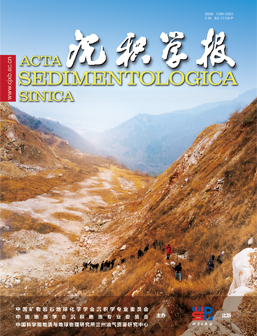Facies Assemblages of Fine-Grained Sedimentary Rocks and Enrichment Mechanisms of Organic-Rich Intervals in the Lower Part of the Nenjiang Formation, Songliao Basin
doi: 10.14027/j.issn.1000-0550.2025.057
- Received Date: 2025-05-12
- Available Online: 2025-11-24
-
Key words:
- Songliao Basin /
- fine-grained sedimentary rocks /
- lamination /
- organic matter enrichment
Abstract: [Objective] The Songliao Basin is a major hydrocarbon-producing region in China. After more than 60 years of exploration, conventional oil and gas development has entered a phase characterized by high cost and high technical difficulty, and the basin has now fully transitioned into the stage of unconventional hydrocarbon exploration. During the deposition of the Upper Cretaceous Qingshankou and Nenjiang formations, two large-scale lacustrine transgressions occurred, creating vast potential resources for shale oil. The first and second members of the Nenjiang Formation host thick intervals of dark, organic-rich fine-grained sedimentary rocks deposited in deep to semi-deep lacustrine environments. However, current understanding of these deposits remains limited, necessitating a systematic characterization of their lithofacies and organic matter enrichment mechanisms. [Methods] Based on core data from Well A34, centimeter-scale high-resolution core descriptions were conducted for the first and second members of the Upper Cretaceous Nenjiang Formation in the Songliao Basin. Microscopic petrographic analysis, total organic carbon (TOC) content measurements, and elemental line and area scanning techniques were applied to further refine the classification of the structures and fabrics of fine-grained sedimentary rocks. [Results and Discussions] A total of 16 lithofacies and 6 facies assemblages of fine-grained sedimentary rocks were identified in the first and second members of the Nenjiang Formation. Based on sedimentological characteristics and elemental geochemistry, a clear distinction was observed between organic-rich intervals (TOC>6%) and those with lower organic content. Organic-rich intervals are predominantly composed of medium- to fine-grained dark mudstones with continuous lamination. The most favorable conditions for organic matter accumulation and lamina development occur at the base of the second member of the Nenjiang Formation. [Conclusions] Synthesizing previously published stable isotope data, it is proposed that a humid climate and nutrient influx from sediment sources were key factors in creating the high biological productivity and strongly reducing conditions in the Songliao Basin during the deposition of the first and second members of the Nenjiang Formation. These environmental conditions promoted the development of high TOC values and well lamination, leading to the widespread formation of organic-rich fine-grained sedimentary rocks.
| Citation: | Facies Assemblages of Fine-Grained Sedimentary Rocks and Enrichment Mechanisms of Organic-Rich Intervals in the Lower Part of the Nenjiang Formation, Songliao Basin[J]. Acta Sedimentologica Sinica. doi: 10.14027/j.issn.1000-0550.2025.057 |






 DownLoad:
DownLoad: